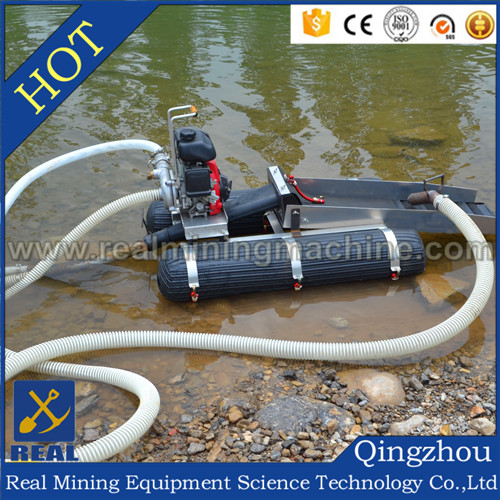

The pump actually pumps only water, which is delivered to a venturi type device (called a power jet or a suction nozzle) which indirectly creates suction in a larger hose. A common misperception is that gravel is sucked through the pump. Nozzles sizes may be up to 2" smaller than hose sizes.Ī gold dredge is powered by a motor and pump. What a dredge manufacturer calls a 5" dredge may be a 4" intake nozzle dredge for permitting purposes. This is a very important thing to remember when working with permits. Therefore most dredge permits refer to the nozzle size, not the hose size, when imposing rules and restrictions. The volume of material processed is determined by the nozzle opening, not the inside diameter of the hose. A 5" dredge may have a nozzle opening of 4" for this reason. However, nozzles are used on dredges which restrict the intake to a size smaller than the inside diameter to help prevent clogs. So a 5" dredge has a main suction hose with a 5" inside diameter. Manufacturers rate suction dredges by the inside diameter of the main suction hose. Floats are also needed because there is rarely a nice gravel bar in just the right place to set up a dredge without floats. Every inch of vertical lift above the surface of the water robs power/suction from the system. This is because a dredge has just enough power to lift water and gravel to just above the surface of the water. Dredges almost always need to be mounted on a set of floats. A sluice box works because gold is 15 times heavier than sand and gravel and so is easily trapped by the riffles and carpet in the sluice box. Material is transported from underwater to the surface and run through a sluice box to capture the gold. Today the colossal hulks of gold dredges remain in many of Alaska's mining districts, and although they are now silent, they whisper of past glories.A suction gold dredge is basically an underwater vacuum cleaner. Walter Johnson deserves to be recognized for revolutionizing gold mining by creating machines that could do the work of a thousand men and find profit where before the ground was poor and impenetrable. After the Klondike-Alaska gold rush, much of the easy pickings were gone and primitive mining techniques were not enough to sustain the gold industry in Alaska. Over the next three decades the twin dredges collected over $600,000,000 in gold and small amounts of silver, and today they remain, largely unchanged, inside Yukon-Charley Rivers National Preserve. The dredge began operation in 1936, and the following year McRae purchased a second nearly identical dredge for nearby Woodchopper Creek. At a cost of $156,000, McRae purchased a dredge from what was by that time called the Walter W. In 1935 the wealthy Canadian investor Alexander McRae was scouting locations for mining Alaskan gold on an industrial scale and after crisscrossing the territory, he selected a Yukon River tributary called Coal Creek where small-scale placer miners had been active for decades. Spence explains, even early dredges were considered a safe investment: Nevertheless, the Union Construction Company and other dredge-makers had discovered a winning strategy. Unlike the dredges Johnson designed for the tropics, the Alaskan machines faced cold and ice that curtailed the months they could operate and demanded that permanently frozen ground be thawed before it could be worked. The parts were then transported to a specific gold claim and reassembled. The dredges the Union Construction Company produced were built in San Francisco and then dismantled and shipped in pieces to Alaska. And in the early years he brought his family-his wife Pearl and sons Keith and Paul-on these work trips that took them on lengthy Yukon River steamboat journeys and to some of Alaska's most remote mining districts. Starting in 1909, Johnson began traveling to Alaska to direct the construction of dredges near Nome and throughout the Seward Peninsula as well as in the Alaskan interior at Ruby, McGrath, Iditarod, Circle, and Fairbanks.


 0 kommentar(er)
0 kommentar(er)
